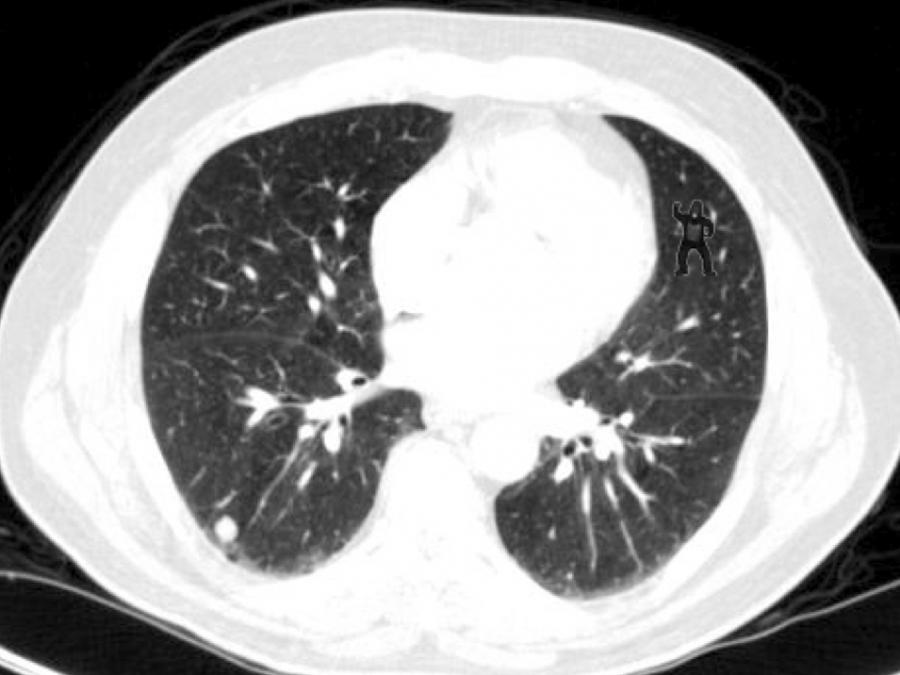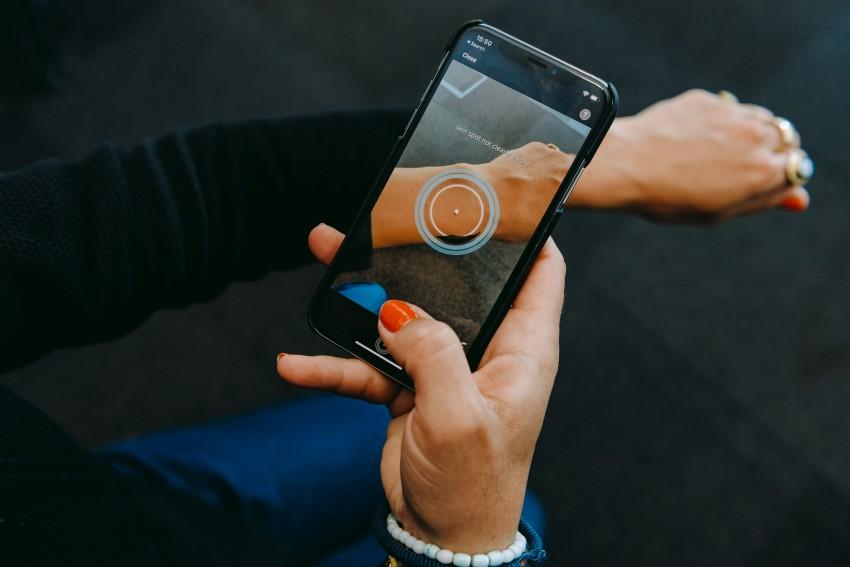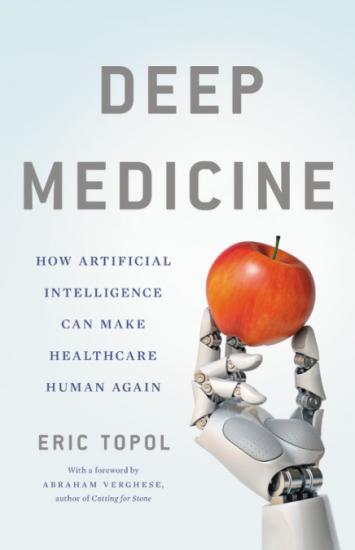
Can artificial intelligence make medicine more humane?
Eric Topol, the author of Deep Medicine: How Artificial Intelligence Can Make Healthcare Human Again (2019), argues in this book that articificial intelligence can make healthcare more humane. Jenny Slatman (Tilburg University) thinks it is questionable whether AI will simply can make a more humane healthcare possible.
The doctor in your pocket
In the spring of 2019, customers of the Dutch health insurer CZ received an invitation to use the app SkinVision free of charge for a year. This app allows you to take pictures of suspicious spots on your skin with your phone. When you send in a photo, it is immediately assessed - not by a dermatologist but by an algorithm - and you instantly receive a message with a piece of advice. Such an assessment costs less than five euros. So, it is logical that CZ sees the potential in this. Still, many people might get an uneasy feeling from these kinds of applications in healthcare. In fact, most people who are concerned about their health want a professional to listen to their story and investigate their symptoms. If the smartphone (or another technological application) takes over this task, health care might become an impersonal, cold, inhuman affair, many people fear.
At the heart of shallow medicine is the fact that doctors no longer have time for their patients
Eric Topol disagrees with this reasoning. Despite acknowledging the many potential negative side effects of artificial intelligence (AI) in healthcare, he sees AI's potential to improve medicine above all else. The key message of his book is that artificial (and therefore non-human) intelligence can make healthcare more humane.
Shallow medicine
According to Topol, contemporary American medicine is characterized by "shallowness." If you compare the current situation with that of forty years ago, it becomes clear what he means by that. In forty years, the number of medical professionals increased from four million to sixteen million, the amount of money spent per person on care per year increased from $550 to $11,000, health care spending increased from 8% GDP to 18% GDP, while the average consultation with a new patient decreased from sixty minutes to twelve minutes, and returning patients still get seven minutes instead of thirty minutes. Thus, at the heart of shallow medicine is the fact that doctors no longer have time for their patients. Even though there are major differences between how health care is organized in the U.S. and how it is organized in Europe, the trends that Topol observes within the U.S. model also apply to Europe.
In addition to the lack of time, shallow medicine is characterized by the fact that doctors (since they are human) are widely plagued by cognitive biases, such as the tendency to always look for confirmation of one's own ideas, overconfidence, the tendency to keep thinking within familiar patterns (availability bias, rule-based thinking). These human tendencies lead to a lot of money being spent on things for which there is little or no actual evidence that they are useful. For example, according to Topol, of the 80 million CT scans performed annually in the U.S., 30-50% are unnecessary, and the recently introduced change in the standard for hypertension from 140/90 mmHG to 130/80 mmHG demonstrates a misdiagnosis “at an epidemic scale”. AI, according to Topol, is the weapon of choice to combat the two characteristics of superficial medicine - lack of time and deficiencies of human cognition.
Some people, therefore, believe that the specialty of radiology - the highest-paid medical specialty in the U.S. - will be obsolete in five years' time. Topol, however, sees it differently.
Especially doctors who are specialized in identifying (abnormalities in) anatomical patterns - radiologists, anatomists, and dermatologists - struggle with the limits of human intelligence: for example, radiologists can be so fixated on certain details in an image that they fail to notice something unexpected. A 2011 experiment found that more than 80% of trained radiologists did not see that an image of a gorilla had been added to a scan of the lungs (Drew et al. 2013).

Radiologists do not recognize the gorilla in the top right corner
It is well known that radiologists, even those who are very experienced, make many mistakes when interpreting scans. A radiologist looks at about 20,000 scans a year. Algorithms, on the other hand, are trained on the basis of millions of images; a number beyond any human capability. Such an algorithm therefore easily outperforms a human. It is therefore quite conceivable that the SkinVision application offered by the healthcare insurance company CZ is not only much cheaper than a dermatologist but also more accurate. Some people, therefore, believe that the specialty of radiology - the highest-paid medical specialty in the U.S. - will be obsolete in five years' time (Chockley & Emanuel, 2016). Topol, however, sees it differently.
Deep medicine
AI offers radiologists the opportunity to practice their profession differently, according to Topol. If radiologists can leave the interpretation of scans to an algorithm, they will have more time for patient contact. AI could thus offer today's physician the almost impossible - the “gift of time." When doctors get more time for their clinical tasks their work will be less shallow. The gift of time could help expel shallowness from contemporary medicine. Where the electronic patient record (EPD), according to Topol, has only led to doctors' precious time being taken up - and is thus the prime example of how digitization should not be used in healthcare - he sees great potential in "natural language processing", i.e. the ability of computers to understand (spoken and written) human language (e.g. speech recognition and processing), in addition to the advancing developments in picture and pattern recognition. If doctor-patient conversations can be processed automatically then that will also save a lot of time.
Before dermatologists will have less work because of algorithms that can take over their work, they will probably spend a lot of time reassuring people who have taken a picture of their skin and now believe they have a serious skin tumor.
Because it can create "more time," AI is at the heart of deep medicine. If you have more time as a doctor, you can really be present and actually listen to your patient, you can be empathetic, you can take the time for a physical examination using your own hands. All these actions, which can never be taken over by a machine, are, according to Topol, crucial to the ritual within which the doctor-patient relationship is created. This is in line with the view of his friend Abraham Verghese (2009), who states that ritual and touch are crucial for actual healing. Topol's idea of "deep medicine" is consistent with the oft-expressed desire to make health care more humane and patient-centered, and is, therefore, to be welcomed. But, as I see it, it is questionable whether AI will simply make this possible.

Using the SkinVision app to monitor your skin
Quite naive
Topol is by no means an uncritical supporter of all the possibilities AI has to offer. He is extremely critical and gives a thorough account of ethical and normative questions surrounding the developments within AI (privacy issues, security of data, creation of new inequalities etc.). Moreover, his book is based on a very thorough study and documentation of the latest developments in AI and is written very smoothly, making it highly recommended for anyone interested in AI in medicine.
Yet in his belief that AI will save time, he seems on the one hand too optimistic - it remains to be seen to what extent it will succeed in actually implementing "natural language processing" in the medical consultation - and on the other hand too naive. I am pretty sure that the SkinVision app won't enable my doctor to have a (longer) conversation with me. The simple reason for this is that my health insurance is not going to reimburse me for such a fine and empathetic conversation. Health insurance companies are not necessarily interested in good conversations between patients and health providers. To them, a consultation is already successful when a patient receives a correct diagnosis. If an algorithm can do this better and cheaper than a doctor, then the health insurance company will push for a reduction in clinical consultations.
But before that happens, we will likely see the opposite. Many people will often take pictures of their skin with the app. Because the app is set up to raise the alarm at the slightest sign of trouble (to avoid false negatives), many users will be advised to visit their doctor anyway to have them check if something is wrong. Before dermatologists will have less work because of algorithms that can take over their work, they will probably spend a lot of time reassuring people who have taken a picture of their skin and now believe they have a serious skin tumor.
References:
Chockley, K & Emanuel, E. (2016)The End of Radiology? Three Threats to the Future Practice of Radiology. Journal of the American College of Radiology. 13 (12): pp.1415-1420
Drew, T et al. (2013). The Invisible Gorilla Strikes Again: Sustained Inattentional Blindness in Expert Observers. Psychological Science
24(9): pp. 1848–1853
Topol, E (2019) Deep Medicine: How Artificial Intelligence Can Make Healthcare Human Again. New York: Basic Books
Verghese, A (2009) A Touch of Sense. Patients and Physicians Connect Through Touch and Trust. Health Affairs (28) 4: pp. 1177-1182
